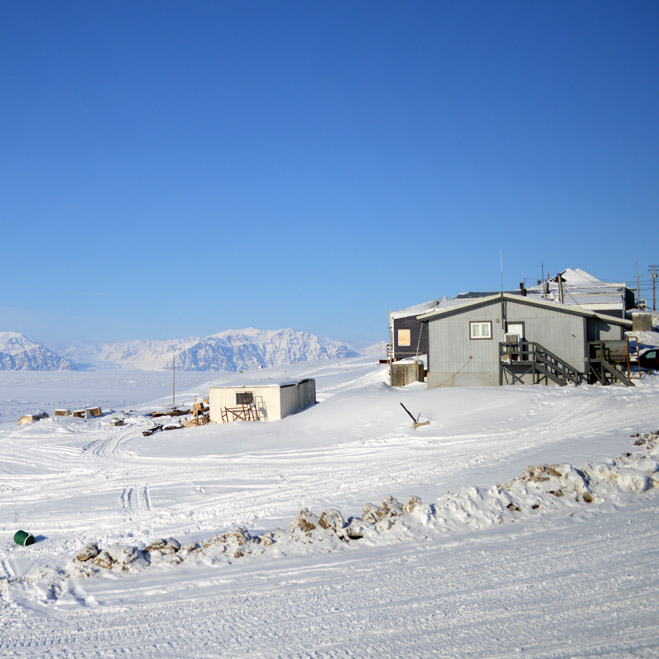
Developed by the Agnes Etherington Art Centre and the Canadian Museum of History, Gatineau, Quebec, with contributions by and support of various Nunavut organizations including the Pond Inlet Archives, Itaq, and Ilisaqsivik, this exhibition examines a transformative era in Canada's Arctic through a unique collection of drawings gathered by Terry Ryan, the artist and arts advisor who worked in Cape Dorset. Created over a three-month period in early 1964 by Inuit men and women from the North Baffin communities of Clyde River (Kanngiqtugaapik), Pond Inlet (Mittimatalik ) and Arctic Bay (Ikpiarjuk), the drawings eloquently document Inuit perspectives of daily life, history and memory during a time of profound social change. This selection of drawings in the exhibition falls into three themes: Conveying Identities, On the Land, and Our Stories. Through accompanying video clips, visitors to the exhibition will encounter the contemporary voices and reflections of the artists, their descendants, and friends, who provide an intimate connection to the people, events and themes depicted in the drawings, while underscoring the importance of cultural heritage to communities today.



This exhibition, organized by Queen's assistant professor of art history and Agnes Curator of Indigenous Art Norman Vorano, was produced with the assistance of practicum student Rosemary Legge and made possible in part by a grant from the Museums Assistance Program, Government of Canada. The exhibition will tour to Piqqusilirivvik Inuit Cultural Learning Facility in Clyde River, the Pond Inlet Archives and the Nunatta Sunakkutanngit Museum in Iqaluit starting in the late summer of 2017, followed by the Canadian Museum of History and venues across Canada.
An exhibition developed by the Agnes Etherington Art Centre, Queen's University, Kingston, Ontario, and the Canadian Museum of History, Gatineau, Quebec. See full acknowledgements.
Before the mounting influences of southern civilization in the Arctic replace the past and in many cases the still present mode of living and thinking among the Inuit ... an attempt [should] be made to encourage and collect what examples of graphic expression might be available.
I'm grateful that my parents were able to leave something behind. I wasn't aware that they had left these drawings behind. When I looked at the drawings, I was amazed. They are unique, they are different. They are about Inuit history, the language, the culture—clothing, living, legends, animals, everything for men and women.
I'm very honored and very happy that I was able to talk about the drawings, because they have made my life better to remember how it used to be back then. When I see these drawings, I think, this was the lifestyle that we were living, and I can remember the things that happened and the things we made back then. That's good. The drawings refresh my memory.

